Abstract
This paper proposes an alternative analysis of the statistically significant blood pressure/blood lead relationship reported for males, ages 12 to 74, based on data from the second National Health and Nutrition Examination Survey. Because of the substantial decline, both for blood lead levels and blood pressures, during the 4-year survey period, there is considerable interest in the extent to which this association can be attributed to concurrent secular trends. The statistical methods illustrate the use of a randomization model-based approach to testing the statistical significance of the partial correlation between blood lead level and diastolic blood pressure, adjusting for age, body mass index, and the 64 sampling sites. The resulting analyses confirm that the significant linear association between blood lead levels and diastolic blood pressures cannot be dismissed as a spurious association due to concurrent secular trends in the two variables across the 4-year survey period. In a conservative approach to this investigation, a randomization model-based test statistic, using the actual level of the natural log of blood lead and diastolic blood pressure, remained statistically significant at the 5% level, even when averaging the association across 478 subgroups formed by the cross-classification of age, body mass index, and the 64 sampling sites.
Full text
PDF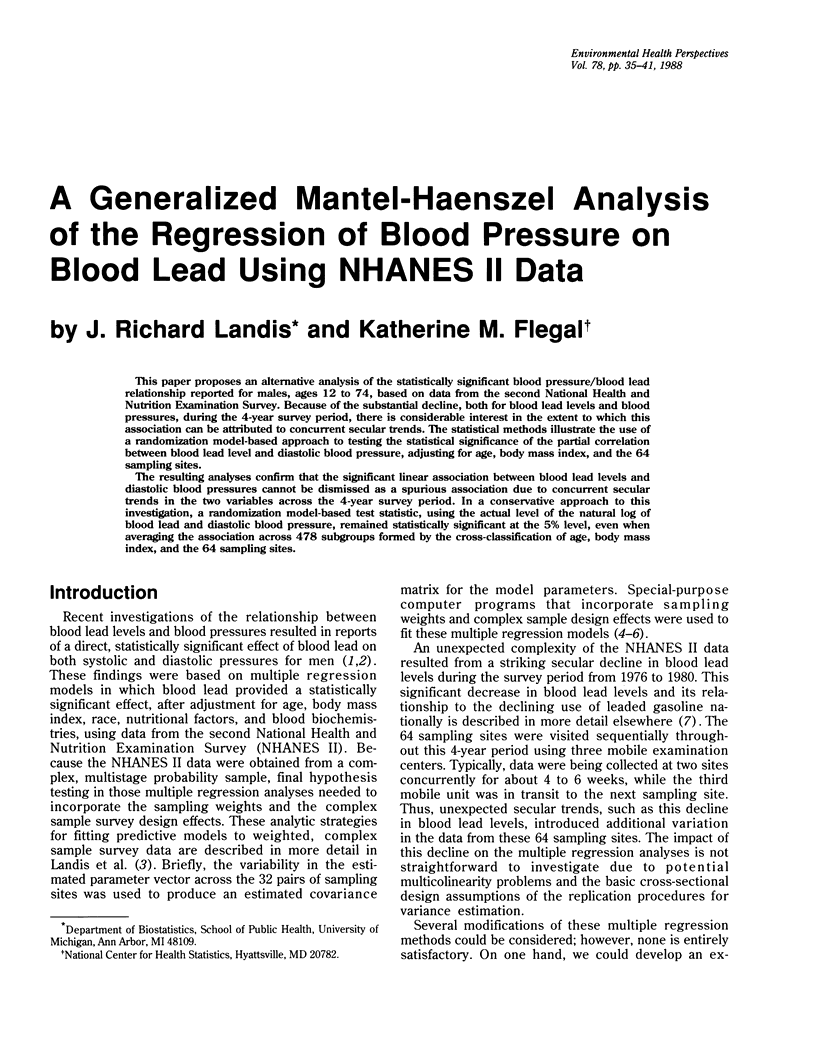

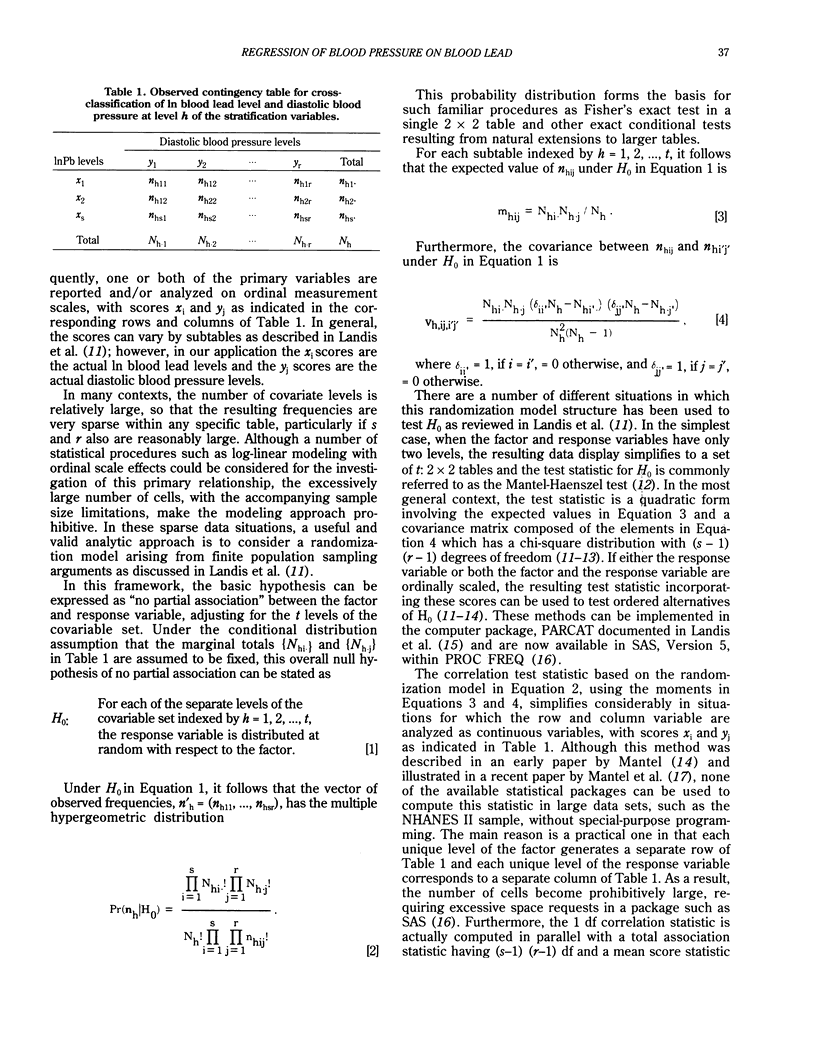
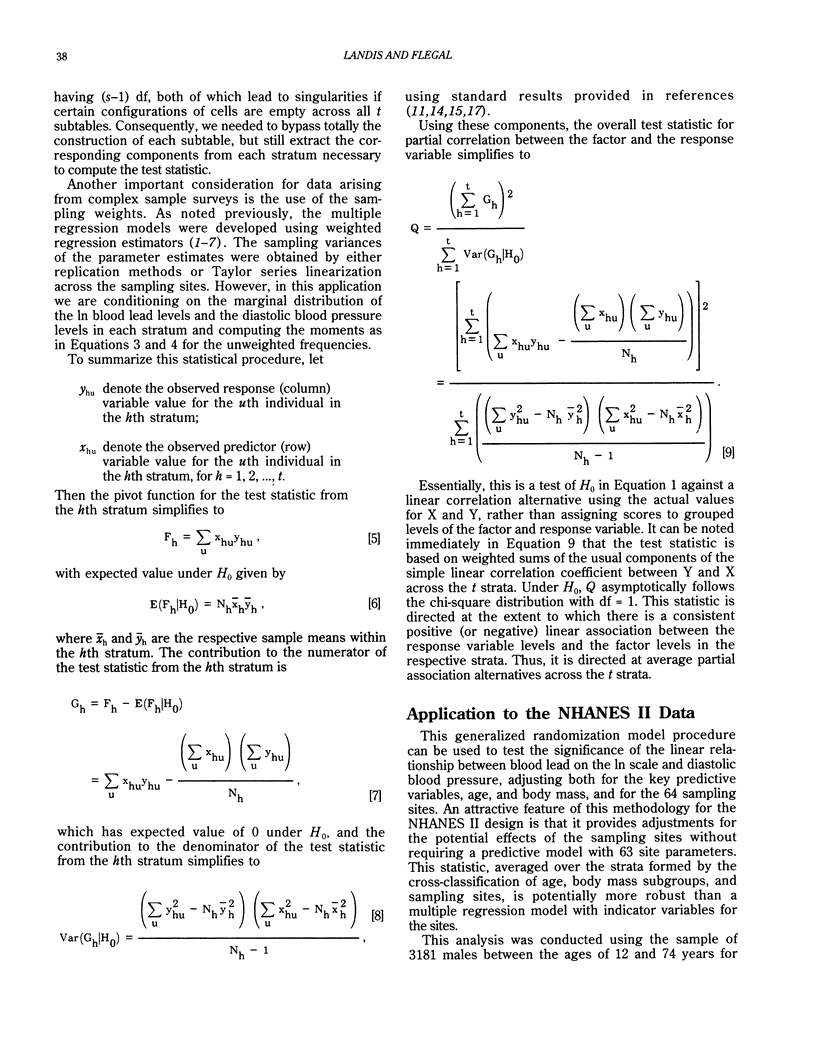
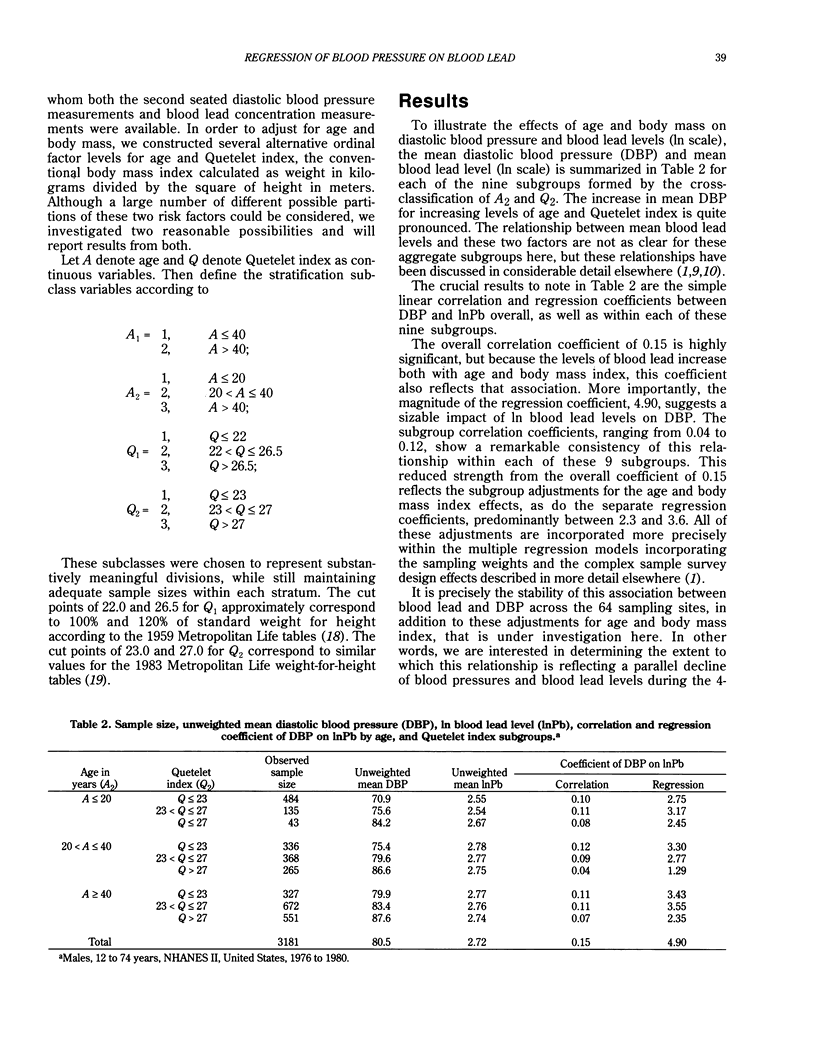
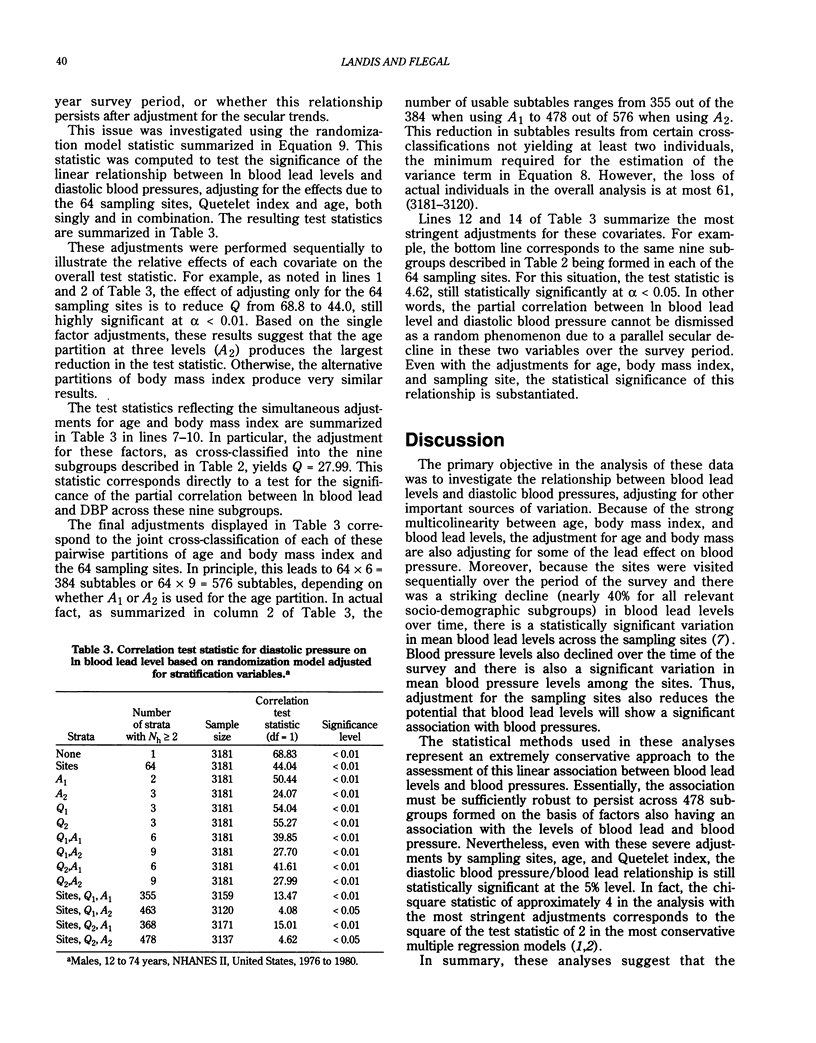
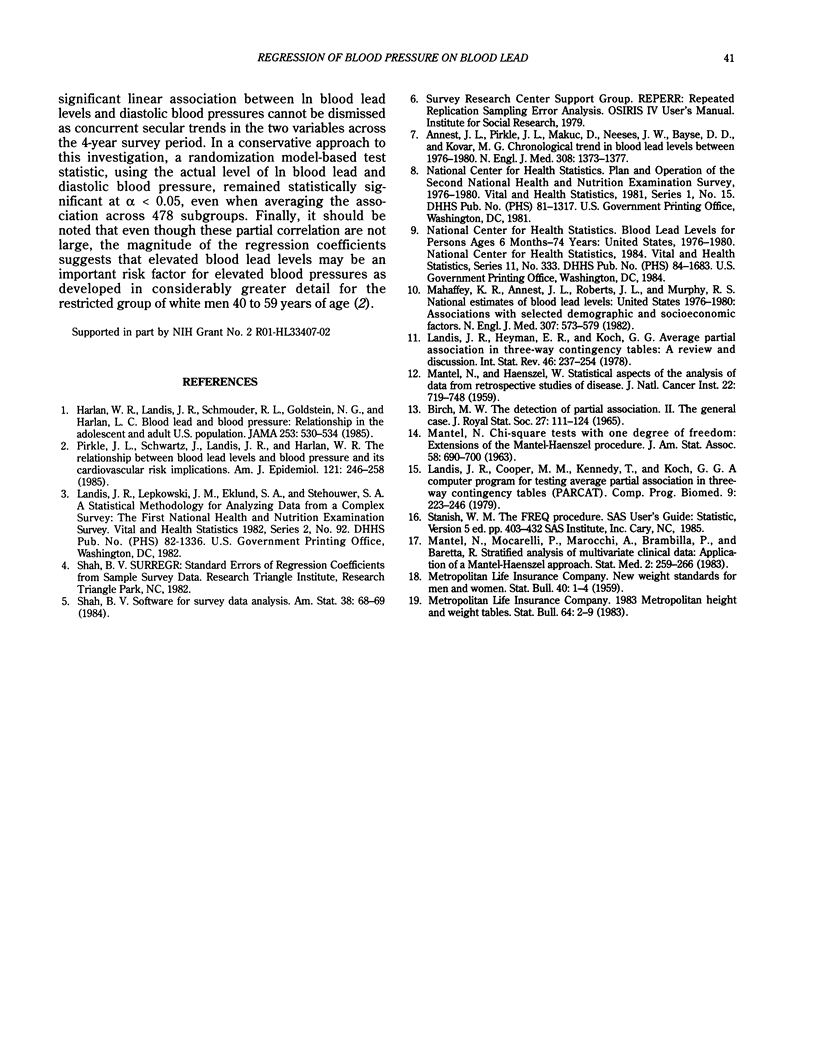
Selected References
These references are in PubMed. This may not be the complete list of references from this article.
- Annest J. L., Pirkle J. L., Makuc D., Neese J. W., Bayse D. D., Kovar M. G. Chronological trend in blood lead levels between 1976 and 1980. N Engl J Med. 1983 Jun 9;308(23):1373–1377. doi: 10.1056/NEJM198306093082301. [DOI] [PubMed] [Google Scholar]
- Harlan W. R., Landis J. R., Schmouder R. L., Goldstein N. G., Harlan L. C. Blood lead and blood pressure. Relationship in the adolescent and adult US population. JAMA. 1985 Jan 25;253(4):530–534. doi: 10.1001/jama.253.4.530. [DOI] [PubMed] [Google Scholar]
- Landis J. R., Cooper M. M., Kennedy T., Koch G. G. A computer program for testing average partial association in three-way contingency tables (PARCAT). Comput Programs Biomed. 1979 May;9(3):223–246. doi: 10.1016/0010-468x(79)90035-7. [DOI] [PubMed] [Google Scholar]
- MANTEL N., HAENSZEL W. Statistical aspects of the analysis of data from retrospective studies of disease. J Natl Cancer Inst. 1959 Apr;22(4):719–748. [PubMed] [Google Scholar]
- Mahaffey K. R., Annest J. L., Roberts J., Murphy R. S. National estimates of blood lead levels: United States, 1976-1980: association with selected demographic and socioeconomic factors. N Engl J Med. 1982 Sep 2;307(10):573–579. doi: 10.1056/NEJM198209023071001. [DOI] [PubMed] [Google Scholar]
- Mantel N., Mocarelli P., Marocchi A., Brambilla P., Baretta R. Stratified analysis of multivariate clinical data: application of a Mantel-Haenszel approach. Stat Med. 1983 Apr-Jun;2(2):259–266. doi: 10.1002/sim.4780020221. [DOI] [PubMed] [Google Scholar]
- Pirkle J. L., Schwartz J., Landis J. R., Harlan W. R. The relationship between blood lead levels and blood pressure and its cardiovascular risk implications. Am J Epidemiol. 1985 Feb;121(2):246–258. doi: 10.1093/oxfordjournals.aje.a113995. [DOI] [PubMed] [Google Scholar]


